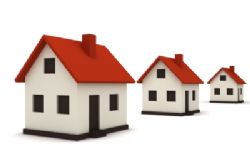With estimates of as many as 800’000 unsold Spanish homes on the property market, it doesn’t take a genius to appreciate that the advantage is currently with the buyer when it comes to negotiating the sale of a property.

As the vendor of a property, it is now more important than ever to ensure that your property is marketed and promoted in the right way. What is perhaps more important is ensuring that your property is priced at its fullest potential and that you can obtain the best possible price from a buyer.
We asked Campbell Ferguson from Survey Spain SL How to Maximise the Value of Your Property in Spain.
A property has a generic value that most people will guess at, an experienced real estate agent will estimate and a trained professional – in this case a chartered surveyor – will be able to calculate more accurately without being influenced by the possibility of a selling fee or the emotion associated with property ownership.
There are tried and tested methods used by property professions to value every kind of property from retail units and warehousing to factories, office complexes and recreational facilities – not to mention homes ranging from the smallest studio to the largest mansion.
Naturally, floor area plays a central role in this, but so do facilities such as bedrooms, bathrooms, terraces, garages and the standard and quality of fittings, etc. Added into the matrix of factors are also location, orientation, access to transport routes, proximity to important facilities such as shops, schools and clinics, as well as aesthetic styling, the presence of positive or negative factors nearby such as parks or noisy roads, and even the impact of future development plans for the area.
It is out of this large mix of elements that each property is ‘weighted’ and then measured against the prices achieved or offered of similar properties in the same area.
Adding value
It is generally accepted that a sum thus arrived at represents the ‘ideal’ value of a property. Naturally the state of the economy and housing market play a large role in the final value, dictating supply and demand, and whether it is likely to go up, stabilise or drop in the months ahead.
However, there is a lot you as the owner can do to determine the value of your property too.
If you consider the standard calculated value to be a flat line – the average for the kind of property in that kind of area – then the owner has the power to either reduce the value significantly or to raise it considerably.
Imagine you inherit a property that was recently valued at X€ euro. You ignore it and it begins to look neglected. Then you come back to it quite some time later with the intention of selling it. Let’s make things simple and assume that the overall market has remained stable, so in theory the original valuation is still valid and the property should still be worth X€ euro.
But here is the rub – in your neglect, the property has become run down, perhaps suffered badly from flooding during the last deluge, and is subsequently far from its original state. Put bluntly, the property will have lost value and would be in need of a price review downwards.
Fortunately, you can also do the opposite and increase the value. Even without changing its character, for example by adding rooms or other expensive improvements to the house, there are creative improvements that needn’t cost much more than a bit of effort.
Your home will be more appealing to potential buyers who should be prepared to pay more for it, if you:
* Keep it well maintained – regular upkeep and prompt fixing of little problems contains any damage and keeps the bills lower, so don’t procrastinate.
* A bit of inspired interior design goes a long way – throw out tired old carpets, curtains and furniture – you can have a new décor that is clean, up-to-date and stylish for remarkably little money
* While your home should have its own character, décors that are too quirky and personalised will put most buyers off
* De-clutter – rooms full of junk not only look messy, but smaller too
* Keep it tidy – interiors and gardens should be tidy and ready for viewers to walk in and be impressed – and they shouldn’t have to step over toys or feel they should offer to help with mountains of unwashed dishes or clothes
* Adding certain details such as a small Japanese garden and water feature, a modern open kitchen, picture windows or skylights can further enhance the value and desirability of your property, so if you have the space (and planning permission), why not add a garage, carport or wooden-decked terrace?
* Take care with removing walls to make bigger rooms. Whilst probably more pleasant to live in, it will reduce the number of rooms, which can be a major feature in any formal valuation
These are just some of the ways in which you can add value to your property. You can’t change its location or orientation, but you can make sure that it is the most attractive and desirable house in the area to live in – and chances are others will think so too.
Article supplied by Campbell D. Ferguson, FRICS, Survey Spain SL Click here for further information and contact details.










